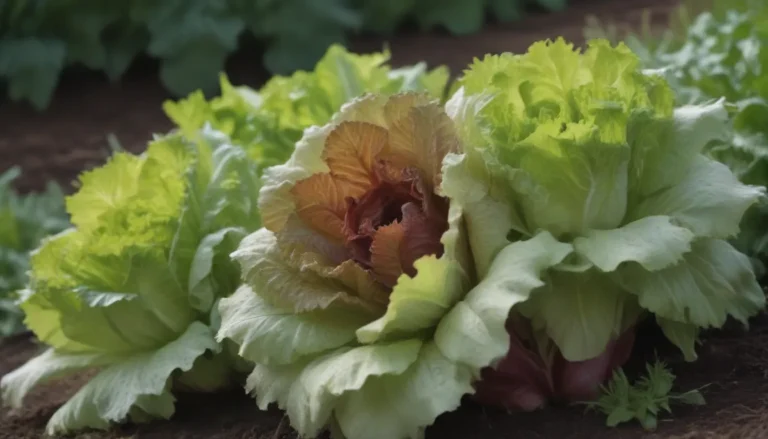Everything You Need to Know About Growing and Caring for Meyer Lemon Trees

If you’ve ever dreamed of having your own supply of fresh, juicy lemons right at your fingertips, then a Meyer lemon tree might be the perfect addition to your garden or home. Meyer lemon trees, a lemon/mandarin orange hybrid, are relatively easy to grow and care for if you live in a warm climate like Florida or California. They are popular as low-maintenance container-grown plants both outdoors and inside, making them a versatile option for citrus enthusiasts.
Meyer Lemon Tree Basics
Before diving into the nitty-gritty details of caring for your Meyer lemon tree, let’s go over some basic information about these delightful citrus plants:
- Meyer lemon trees are slightly more cold-tolerant than other lemon varieties.
- They need a sheltered and sunny position to thrive.
- Excellent drainage is essential for their well-being.
- Meyer lemon tree skin and plant materials are toxic to pets, so be mindful of where you place your tree.
Now that we have covered the basics, let’s move on to the essential care tips for your Meyer lemon tree.
Meyer Lemon Tree Care
Taking care of a Meyer lemon tree involves a few key components that are essential for its growth and fruit production. Let’s delve into each aspect:
Light
Like all citrus trees, Meyer lemon trees love the sun. To ensure optimal growth and fruit production, place your tree in a spot that receives at least eight hours of direct sunlight each day. While Meyer lemon trees can survive in slightly shadier locations, they will thrive in full sunlight.
Soil
Meyer lemon trees are adaptable and can grow in various soil types as long as the soil has good drainage. They prefer acidic soil with a pH between 5.5 and 6.5. Test your soil before planting to determine if any adjustments are needed. You can add lime to increase the pH or sulfur to lower it as required.
Water
Proper watering is crucial for the health of your Meyer lemon tree, especially if it is grown in a container. Keep the soil moist but not waterlogged by checking the soil moisture regularly. Use the finger test – if the soil feels dry, it’s time to water. Avoid overwatering, as it can lead to root rot. Use pot feet to ensure proper drainage and prevent waterlogging.
Temperature and Humidity
Meyer lemon trees thrive in temperatures between 50 and 80 degrees Fahrenheit. If you live in colder regions, bring your tree indoors when temperatures consistently drop below this range. Protect your tree from freezing temperatures by using a cover or moving it indoors. Citrus trees prefer humidity levels above 50 percent. Create a humid environment by using a pebble tray or a small humidifier.
Fertilizer
Feed your Meyer lemon tree with a high-nitrogen or slow-release all-purpose fertilizer during the growing season (spring through fall). Additional feeding with liquid fertilizers like compost tea, liquid kelp, or fish emulsion can also benefit the tree. Avoid over-fertilizing, as it can harm the tree.
Pruning
While the shape of your Meyer lemon tree doesn’t affect its fruit production, pruning is essential for maintaining its health. Wait until the tree is 3 to 4 feet tall before pruning. Remove dead or dying branches, thin stems, and any branches that impede airflow. Pruning should be done after the fruit has ripened in winter.
Propagating Meyer Lemon Trees
Propagating a Meyer lemon tree is relatively simple and can be done using semi-hardwood cuttings. Take cuttings from healthy, new growth in late spring or early summer for the best success rate. Root the cutting in well-draining soil to grow a new Meyer lemon tree.
Potting and Repotting
When potting a Meyer lemon tree, choose a container that is at least 5 gallons in size with proper drainage. Repot the tree every two to three years or when the roots outgrow the container. Repotting should be done in early spring before the active growing season begins.
Overwintering
Meyer lemon trees can tolerate temperatures down to 20 degrees Fahrenheit. If you live in a colder climate, bring your tree indoors for the winter to protect it from freezing temperatures. Place the tree near a window to receive adequate sunlight during the winter months.
Common Pests and Plant Diseases
Keep an eye out for common pests like whiteflies, aphids, mealybugs, and scale that can infest Meyer lemon trees. Prune infected areas and treat the tree with horticultural oils like neem oil to control pest infestations. Regularly inspect your tree for signs of pests and diseases to prevent damage.
How to Get Meyer Lemon Trees to Bloom
While Meyer lemon trees are primarily grown for their fruit, encouraging them to bloom is essential for fruit production. Follow these tips to ensure your tree blooms and produces fruit successfully:
- Meyer lemon trees typically bloom in spring and fall.
- Provide ample sunlight (at least 8 hours a day) for blooming.
- Fertilize your tree monthly with a citrus-specific fertilizer.
- Ensure your tree experiences brief periods of cooler temperatures in winter and early spring to encourage blooming.
- Meyer lemon trees are self-fertile but benefit from outdoor exposure to insects and birds for pollination.
Additional Tips and Facts
- Meyer lemon trees can grow up to 10 feet tall, while newer dwarf cultivars reach an average height of 5 to 7 feet.
- It takes about four years for a Meyer lemon tree to start producing fruit.
- Protect your tree from freezing temperatures to prevent damage.
- Proper care, including pruning, watering, and fertilizing, is key to a healthy and productive Meyer lemon tree.
By following these care tips and guidelines, you can enjoy a thriving Meyer lemon tree that provides you with an abundant supply of fresh, juicy lemons year-round. Happy growing!





